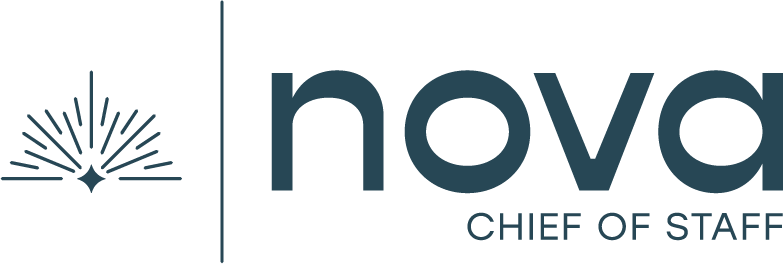Are You a New Chief of Staff? 5 Things You Should Do Right Away
Starting a new role as a Chief of Staff can feel like diving into a whirlwind of responsibilities and expectations. Some people call this “drinking from a firehose.” If you're unsure where to begin, don't worry—you're not alone. Here are five crucial steps to set yourself up for success. And if you’ve been a Chief of Staff for a while, don’t worry, it’s not too late! You can start on these now, too.
1. Document the Current State
The executive back office is often a hive of activity, with information flowing in from all directions. To navigate this complexity effectively, start by documenting the current state of the back office for your leader. Begin by mapping out all the weekly, monthly, and quarterly meetings that occur throughout the year (also known as the Rhythm of Business) and the participants in those meetings. Identify operational cadences—when you should look back at what's been done, look forward for what's to come, and when to plan for new strategic initiatives. This documentation will provide you with a clear understanding of the existing processes and help you make strategic recommendations. Not documenting everything in its current state will limit your awareness of opportunities and make you less efficient. As Chiefs of Staff, one of our primary roles is to create a structured environment where everything has its place—whether it's a new idea, a meeting agenda, or a project update.
2. Build a True Partnership with the EA
Your Executive Assistant (EA) is not just a support function but a strategic partner in your role as Chief of Staff. Take the time to understand their daily responsibilities, goals, and areas where they excel. Likewise, if there have been Chiefs of Staff prior to you, ask the EA what they did well and where there were skill gaps that are crucial to this role. Building a solid partnership with your EA can significantly enhance your effectiveness and productivity. Investing in your EA relationship is one of the most critical aspects of the Chief of Staff role.
3. Conduct 1:1s with the Executive Team
Building strong relationships with the executive team is essential for success in the Chief of Staff role. To establish a deeper connection, schedule one-on-one meetings with each member of the executive team. Use these meetings to understand their perspectives, pain points, and aspirations. By staying connected at an individual level, you'll gain valuable insights into team dynamics, culture, and areas for improvement.
4. Focus on the Back Office First
As a Chief of Staff, you report to a PERSON, not the ORGANIZATION. Your executive should stay focused on the high-level strategy and vision space and out of tactical, hands-on execution. That's where you come in. It might be tempting upon starting to overachieve and say "Yes" to all tasks requested of you. But if those tasks don't support your executive's initiatives and free up their time to be a visionary, the answer is "No."
5. Increase Your Financial Acumen
While financial matters may seem daunting, developing a basic understanding of key metrics and financial concepts is crucial. Identify the top 5-10 metrics or Key Performance Indicators (KPIs) that are discussed, asked about, or presented within your team. Truly, just 5-10 and learn them intimately. How do they work, what makes them change, and how are they interconnected? Also, find a finance resource where you can have a little "101" session about the critical areas of the business. This knowledge base will likely be enough of a foundation for you to be dangerous, and if you must dive deep into a more financially specific project or topic, you'll have a solid foundation and a person to call.
A Chief of Staff should be able to look at the business, determine the needs, and solve the problems. Prioritizing these crucial activities will create a solid foundation of understanding and alignment within your new role and prepare you to shine as Chief of Staff. YOU GOT THIS!
Curious about the Nova Chief of Staff Certification course? First, check out our syllabus to see if you think it’d be a great fit for you!

